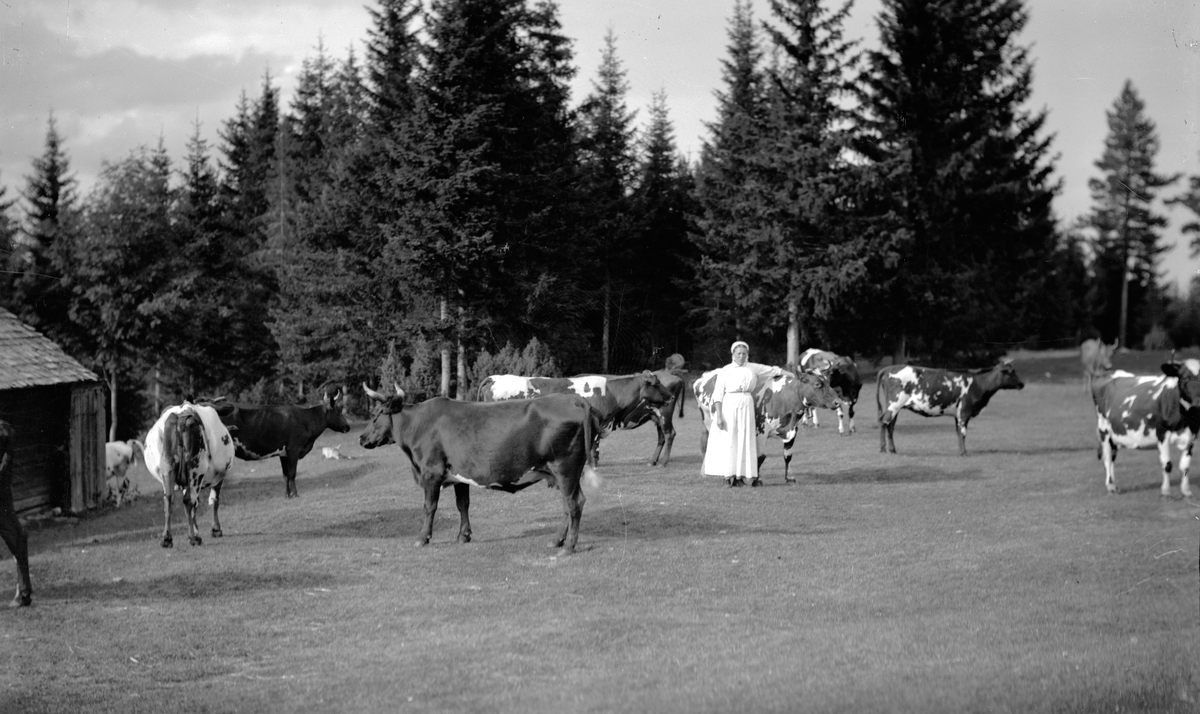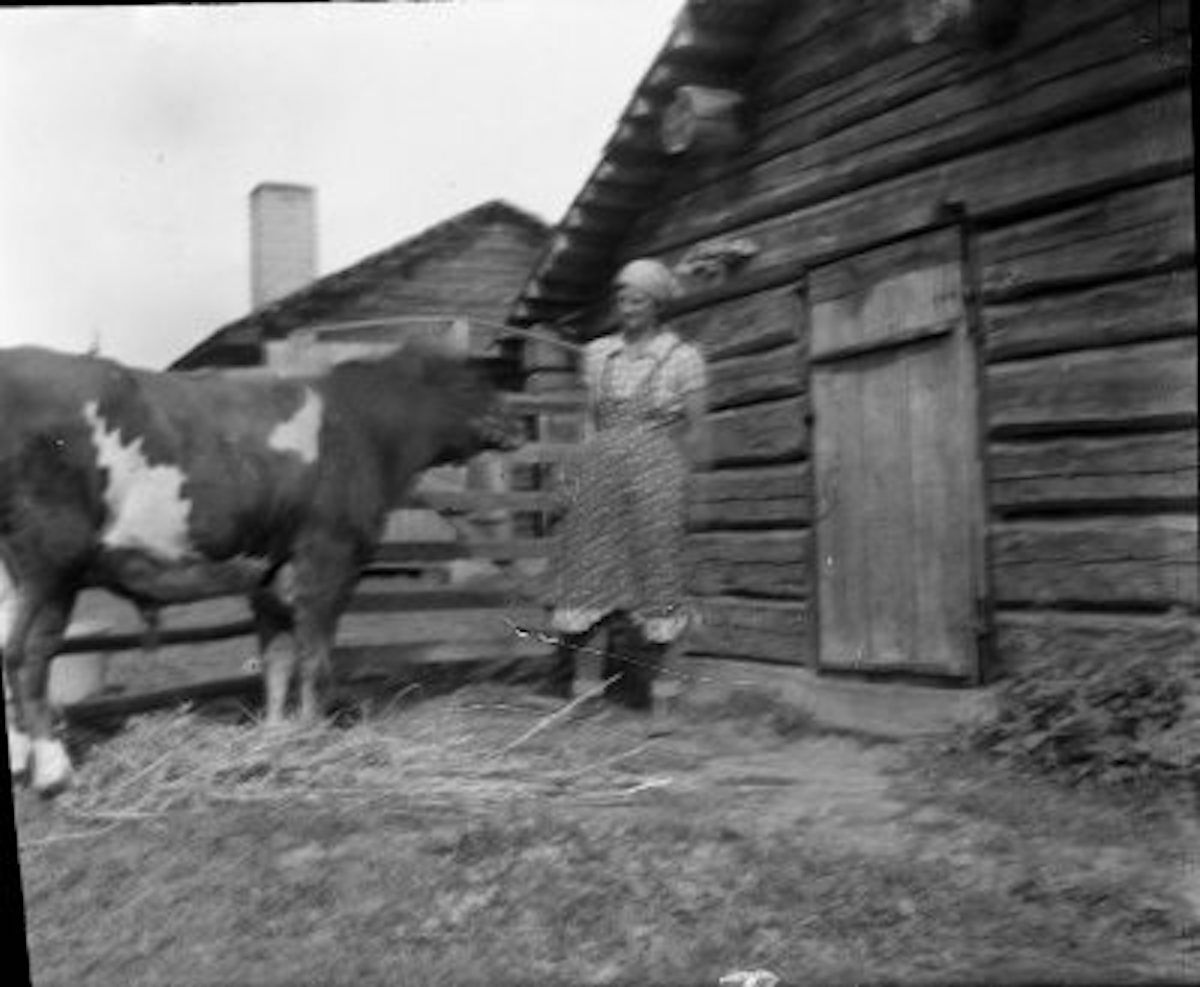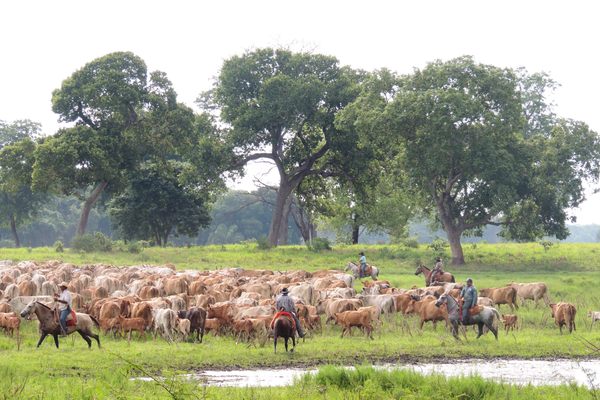The Spellbinding Swedish Song That Calls Cows Home
For centuries, herdswomen have lured cows with haunting melodies.
When Jonna Jinton was twelve, she heard a song that would change the course of her life. During a school field trip to a music museum in her home country of Sweden, Jinton and her classmates were instructed to clasp their hands over their ears. The tour guide then let out a cry—a haunting, high-pitched song that rattled the room. Some students might have clamped their hands over their pulsing ears even harder, but Jinton, taken by the sound, wanted to hear it. “I didn’t want to keep my hands over my ears,” she recalls. “It was the most beautiful thing I had ever heard. It was so strong.”
Having now mastered this Scandinavian vocal technique known as kulning, Jinton performs and posts her own songs for hundreds of thousands of captivated YouTube subscribers and Instagram followers. For most viewers, her videos are an introduction to kulning. But the practice is far from new. Kulning is an ancient herding call that Swedish women have practiced for hundreds of years. But in recent decades, Jinton says, it’s been largely forgotten.
Less than a century ago, Sweden’s remote forests and mountain pastures swelled with women’s voices each summer. As dusk approached, the haunting calls of kulning echoed through the trees in short, cascading, lyricless phrases. Though often quite melodic, these weren’t simply musical expressions. They were messages intended for a responsive audience: wayfaring cattle. Kulning was a surefire way to hurry the herds home at the end of the day.
According to Susanne Rosenberg, professor and head of the folk music department at the Royal College of Music in Stockholm and kulning expert, the vocal technique likely dates back to at least the medieval era. In the spring, farmers sent their livestock to a small fäbod, or remote, temporary settlement in the mountains, so cows and goats could graze freely. Women, young and old, accompanied the herds, living in relative isolation from late May until early October. Far from the village, they tended to the animals, knitted, crafted whisks and brooms, milked the cows, and made cheese—often working sixteen hour days. Life on the fäbod was arduous work, but it was freeing, too. “It was only women, and they had all this free space to make a lot of noise,” says Jinton. “They had their own paradise.”
The herds grazed during the daytime, wandering far from the cottages, and thus needed to be called in each night. Women developed kulning to amplify the power of their voices across the mountainous landscape, resulting in an eerie cry loud enough to lure livestock from their grazing grounds.
One should always take caution when hanging out with someone kulning, as it can’t be done quietly. Rosenberg, who’s researched the volume of kulning, says it can reach up to 125 decibels—which, she warns, is dangerously loud for someone standing next to the source. Comparable to the pitch and volume of a dramatic soprano singing forte, kulning can be heard by an errant cow over five kilometers away. This explains how the song might reach a distant herd, but what prompts animals to trot over remains a bit of a mystery. “That we have to ask the cows!” says Rosenberg. “But it’s really no stranger than calling a dog.”

Much like trained pets, cows feel loyalty to the humans who care for them. According to Rosenberg, it only takes one solid affinity between a cow and a woman to bring the whole herd home. “There’s always at least one cow that is the smart cow, in a herd,” she says. “She’s like the leader cow.” Once this particularly enlightened cow hears the call, Rosenberg suspects, she heads toward the source, encouraging the rest of the herd to follow suit.
To do this at such great volume requires learning the proper technique, which, it turns out, is a far cry from that of classical or popular singing. “It’s more like calling,” says Rosenberg. “Like if you see somebody on the other end of the street, it’s the way you would use your voice naturally to try to get their attention.” Kulning was taught orally. Young women learned from the old, imitating the songs of their elders and slowly adding individual flair and vocal ornamentation. Rosenberg, who now teaches kulning in a classroom setting, says the key to the call is improvisation. “You have to have variation, because you never know how long you’re going to be calling for.” In other words, you have to keep singing until the cows come home.
Cows, however, weren’t the only ones on the receiving end of kulning. The call could ward off predators in the woods, and served as a form of communication between women who were otherwise isolated from one another. If a cow went missing, for instance, a woman on one farm might cry out using a particular melody to pass the message to those within earshot. Once the cow had been located, her far-off neighbor would convey the news back to her in song.

Rosenberg discovered something else during her research. While interviewing herdswomen from the last generation to regularly practice kulning in the context of the fäbod, she became aware of the call’s effect on the women. “There’s a pride in it,” she says. “This a skill that they cherish by themselves, too.” It became obvious to Rosenberg that kulning wasn’t simply a tool, but also a form of individual musical expression. “Many researchers and ethnomusicologists try to separate the function and the art,” she says. “But I found that with kulning, function and art are actually just two sides of the same thing.” This was apparent in the joy it brought the herdswomen she spoke to, the pleasure it brought those in earshot who would stop their work to listen, and the shivers the sound can send down the spine today, even through tinny laptop speakers.
Perhaps it’s the intangible thrill of kulning that has allowed it to survive into the modern day, even as the fäbod milieu slowly receded from Swedish society. From the 1960s to the 1980s, remote summertime herding faded from practice, and kulning was approaching obsoletion. Luckily, a few historians and musicians, including Rosenberg, were intent on weaving it into Swedish culture in new contexts, using new platforms.

With the help of people like Rosenberg, traditional music saw a revival—finding new life in theater, contemporary folk music, university classrooms, feminist organizations, and beyond. A few decades later, an inspired Jinton would go on to learn the technique by studying one of Rosenberg’s books. Now, she’s intent upon sharing kulning with the public through social media.
When Jinton turned 21, she decided to quit her studies to move from the city of Gothenburg to a cottage in Grundtjärn, the remote village where her mother was born. She began practicing kulning more regularly—in the forest, to prevent unexpected bear encounters, or to serenade her cow, Stjärna. She began a blog, and when she posted her first video of kulning, it instantly went viral. “Before I started sharing my videos, I thought I was alone feeling this way about these sounds,” says Jinton. “But so many people were feeling something special, almost as if they were being reminded of something.” Kulning can entrance creatures of all kinds—from loyal cows to enraptured Instagrammers. Jinton intends to spread that feeling to others by performing a vanishing art.
But Rosenberg has a different take. Maybe, she says, kulning never disappeared. Instead, it’s simply resurfaced in new ways. If you listen closely, she says, you can find kulning everywhere in Sweden today. You can hear it on stage at a folk show, or in someone’s backyard when a mother calls her children in for dinner. Some women have even learned the far-carrying cries as a form of self-defense, says Rosenberg. It has survived, she says, by shifting as it slips into new contexts. “I do not see it as a revival,” she says. “It’s really a continuation of an expression that is so strong, it will always find a way to persist.”
The Atlas Obscura Podcast is a short, daily celebration of all the world’s strange and wondrous places. Check out this episode about kulning here.
Gastro Obscura covers the world’s most wondrous food and drink.
Sign up for our regular newsletter.





































Follow us on Twitter to get the latest on the world's hidden wonders.
Like us on Facebook to get the latest on the world's hidden wonders.
Follow us on Twitter Like us on Facebook